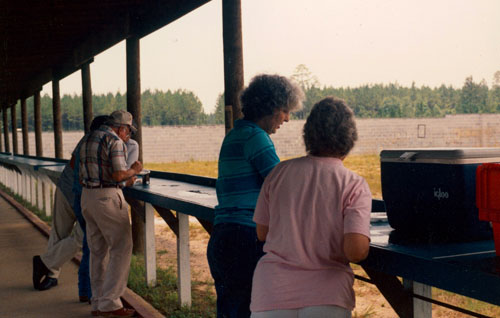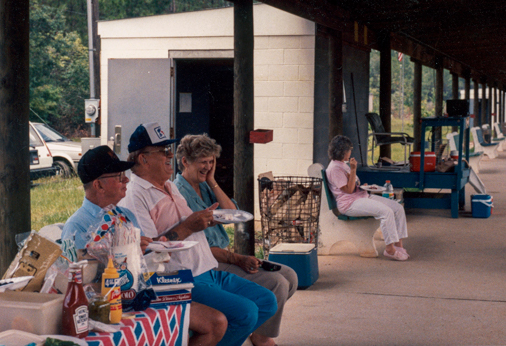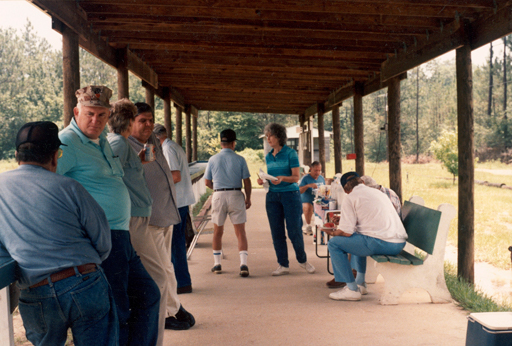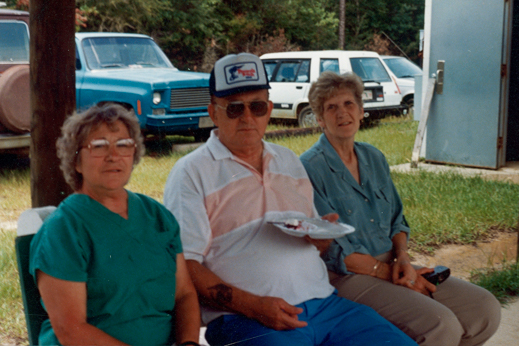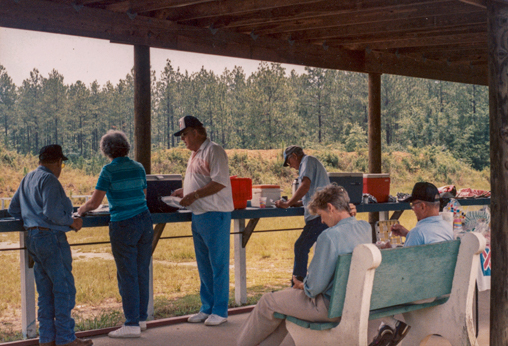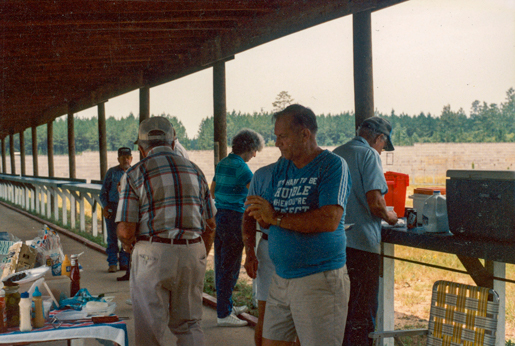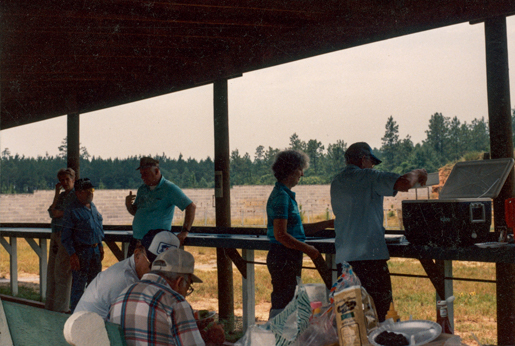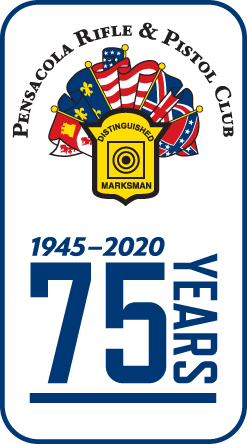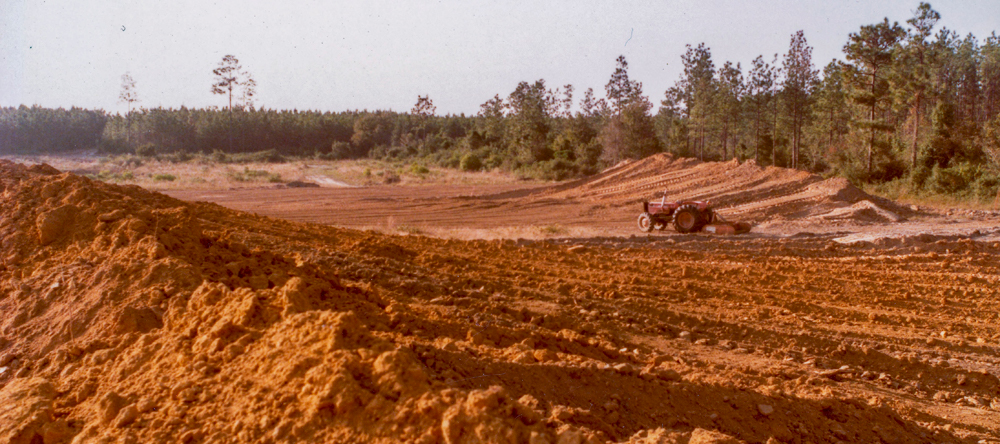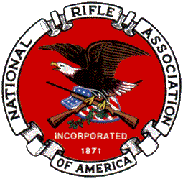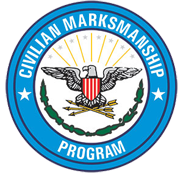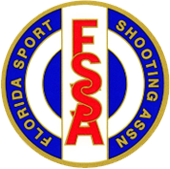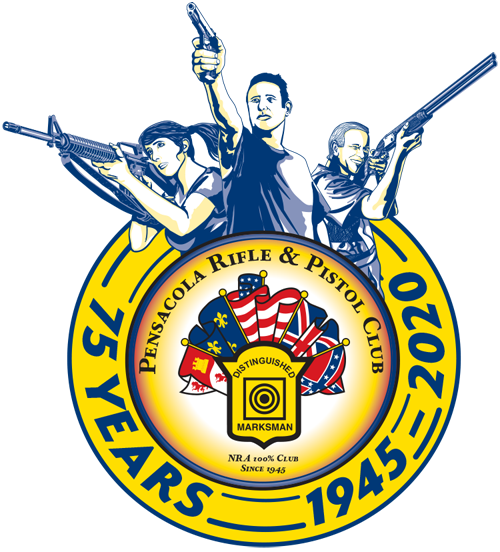Club History In Photos: A New Beginning - 1984
A special thank you goes out to the family of Liston Pierce, who loaned these photos to the club so we could tell our story. For more than 35 years our club has been using this location for recreation and marksmanship competition.
If you can help us pin point a date or year, see something or someone familiar, please share with us to complete the "picture", please feel free to send that information in an email to the editor at newsletter@pensacolarifleandpistolclub.com

This is Liston Pierce in a photo dated June 1963. We are grateful to him for taking all of these photos and his family being gracious enough to share them with the club. He was also a big help being available whenever there was work that needed to be done at the range.
This page is dedicated to him.
Before Building, You Have To Get There First.
The road construction and range design began in the late 1970s to early 1980s. During this year the road was built, cleared and the ranges graded. As you will see a trail for four-wheel drive only, was graded into a road for all types of vehicles.
A Trail Becomes a Road
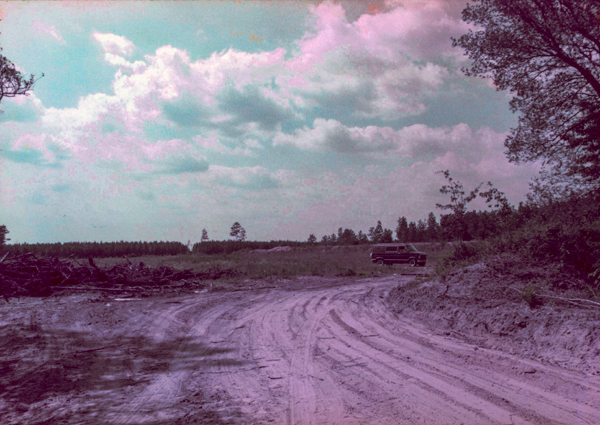

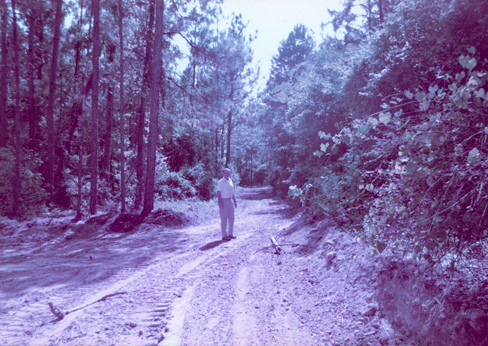
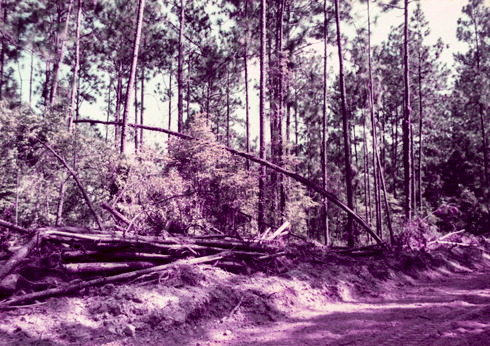
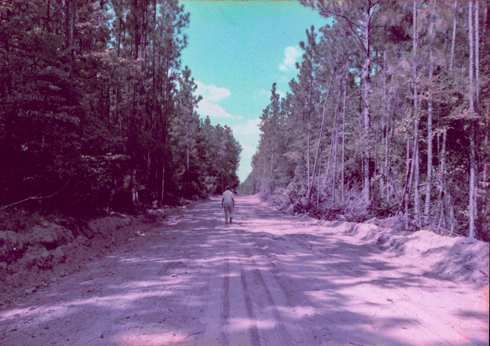
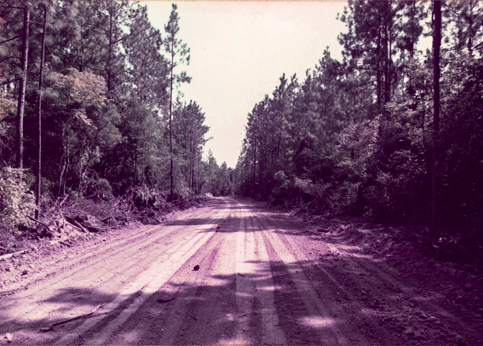
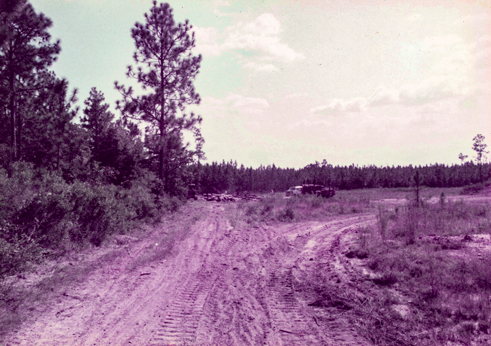
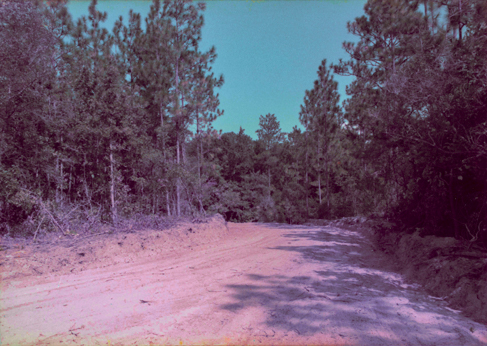
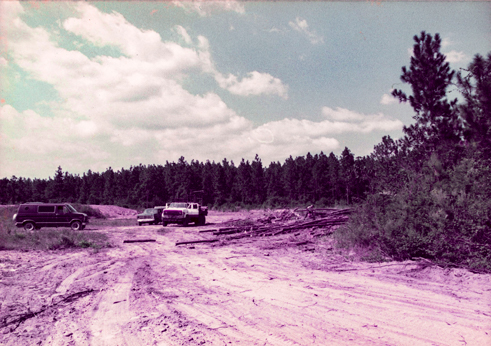
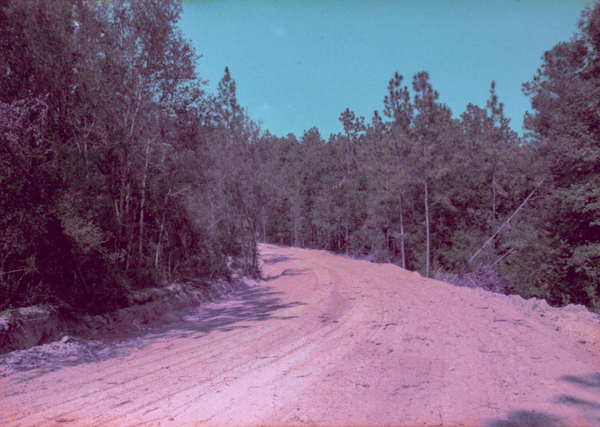
Fencing the New Land and Installing the Gates
Our original 40 acres had to be reached through an easement which required us to install two gates. The first gate was located at what we call our main gate today. The original main gate was located at the northeast corner of our original land at the end of the easement.

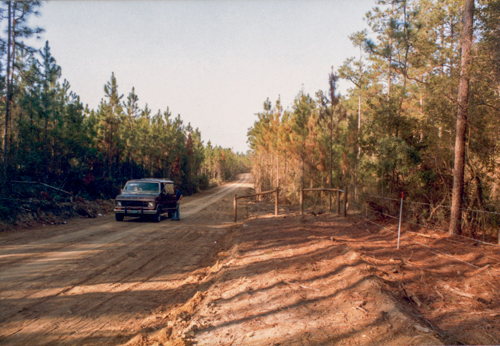
This gate area was installed at a natural entrance in part of our easement, it later became our main gate after acquiring additional land.

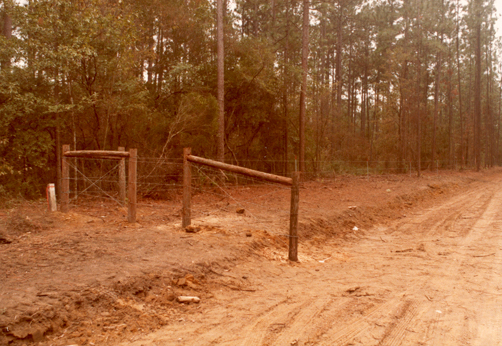
The sign and gate in the photo below was originally installed at our main gate located at the northeast corner of our original property. It was removed after we purchased the adjoining 40 acre lot directly to our north in the early 2000s.
Notice the logo as it appeared then. This sign was replaced with the current logo that still features the five flags of the governments that have laid claim to Pensacola, but the globe was replaced with the gold shield of the Distinguished Marksmanship badges which are awarded by the United States government.
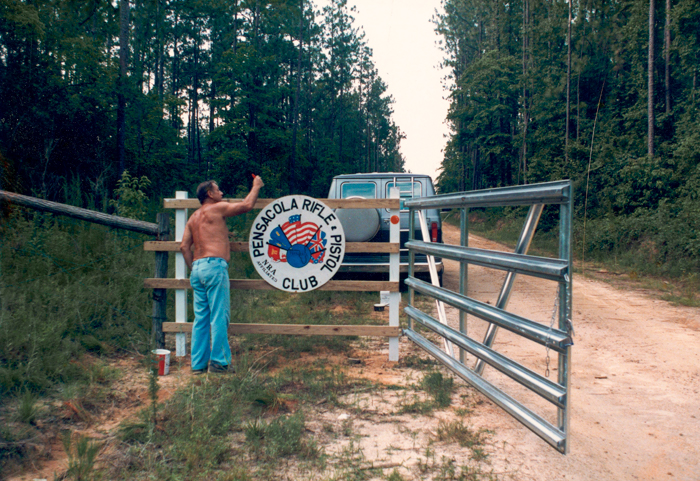
The Land is Leveled and Backstops Built
The original ranges built began with the pistol range, then the 100, 200 rifle and "plinking" ranges. Oral tradition says that the U.S. Navy SeaBees were involved with bringing the heavy equipment out and used our range project as a training exercise. One day we may find photos showing them at work.

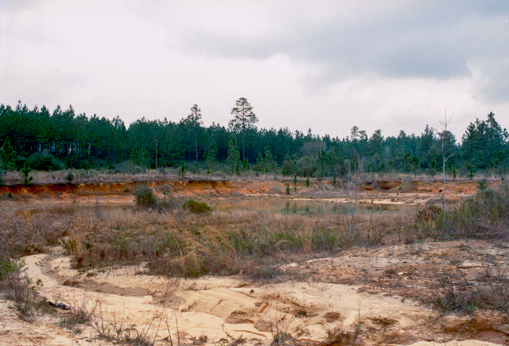
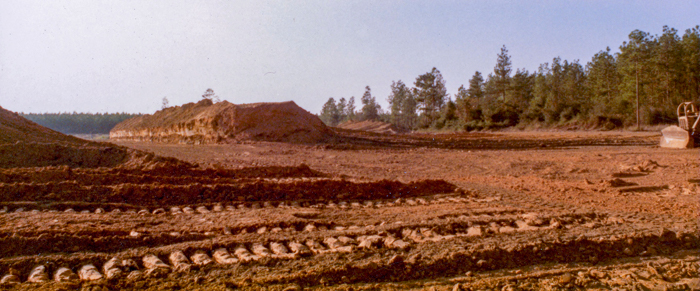
This photo has the only visual evidence of the possible SeaBees heavy equipment used to build our range.
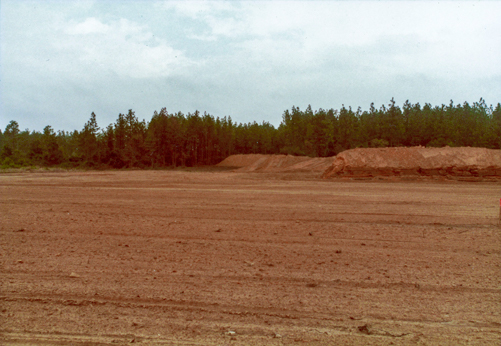
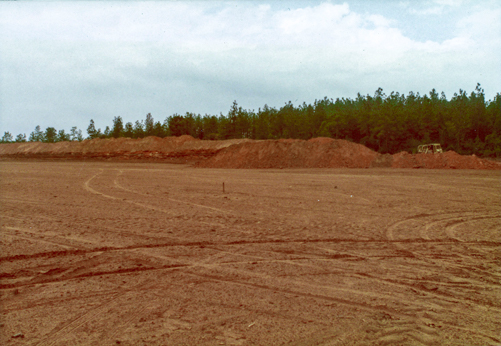
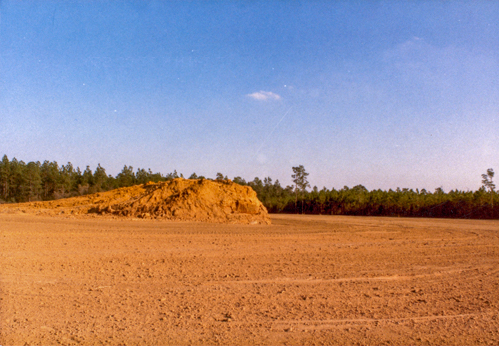
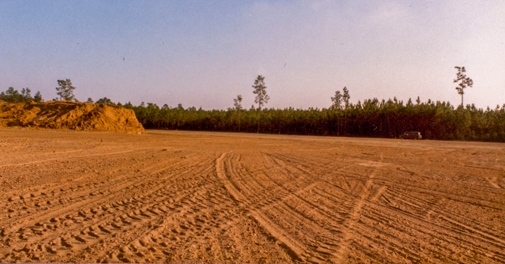
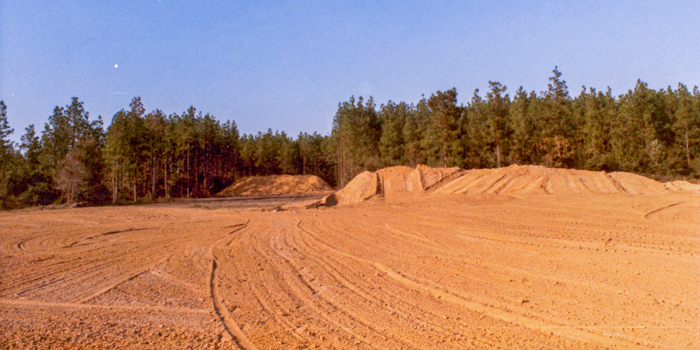
Viewing the future 100 and 200 yard rifle ranges from the vantage point of the planned firing line.
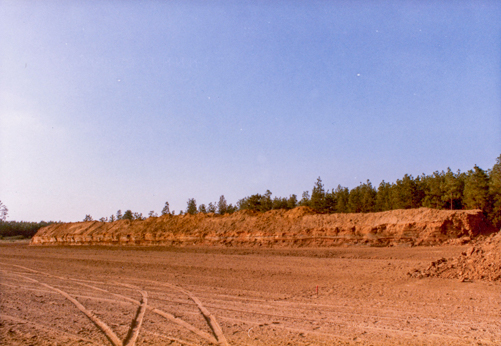
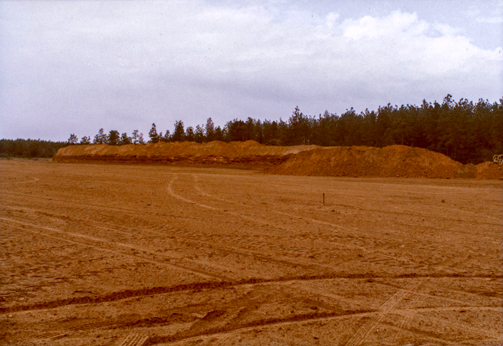
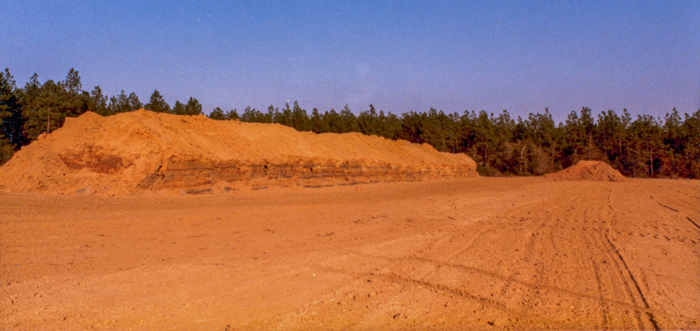
A late afternoon side view of the new pistol and recreational plinking range backstops which are still in use today.

Deconstructing the Beck's Lake Range and moving it to our new home.
The new land was owned by us, a first in our club history having always used land that was loaned to us. Having to move is never an easy task, but moving to a permanent home brings excitement. The old range in Cantonment was disassembled piece by piece and moved to the new range after the earth moving was completed.
The reconstructed shelters at the new range had a shorter than expected life when a storm brought a tornado through which destroyed everything leading to the structures on the range today.
A giant puzzle, rebuilding the range in 1985.
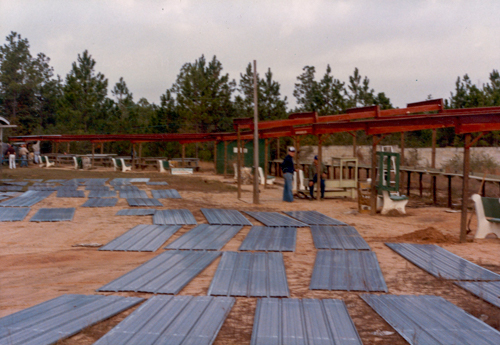
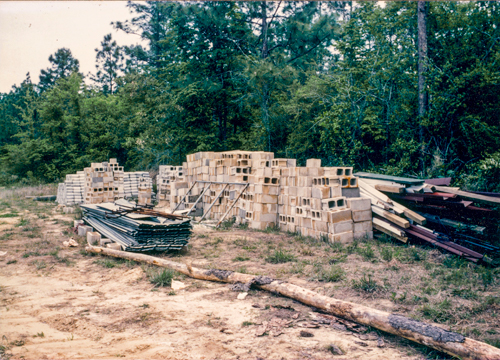
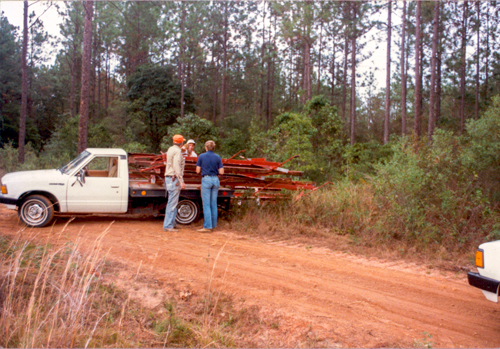
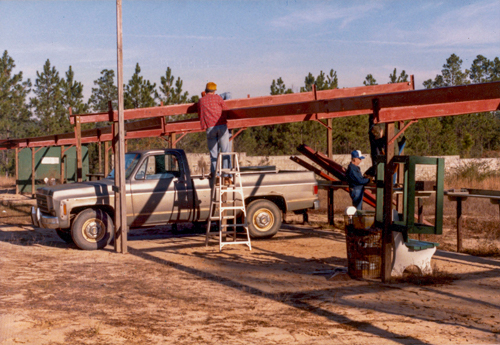
The steel structures were taken apart and laid out like a the key to a puzzle so the parts could be reassembled on our new land. The photo below shows how the pistol range appeared when finished
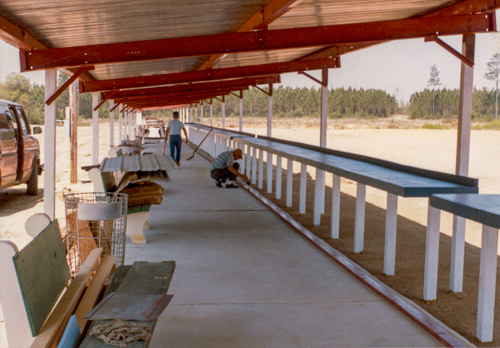
The First Range Completed - Pistol (now known as the Nat Arenson Memorial Pistol Range)
During this period in our history, many of our members were bullseye pistol shooters. Since members made up most of the range construction parties, is it any wonder that what is known as the "bullseye" range was completed first. However, the rifle ranges, which required less additional work were technically completed before pistol since it did not require electricity.
The concrete firing line was laid at that time was from the pistol range down to the end of the 200 yard rifle range. The firing line shelter was from the range in Cantonment and was reassembled and the 25 yard line turning targets were installed as they are seen today.

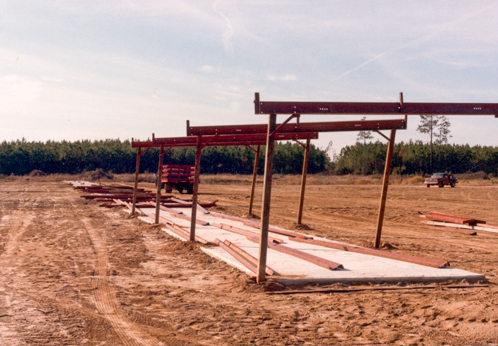
The framing install continued from one end of the concrete firing line down to the end of the 200 yard rifle range.
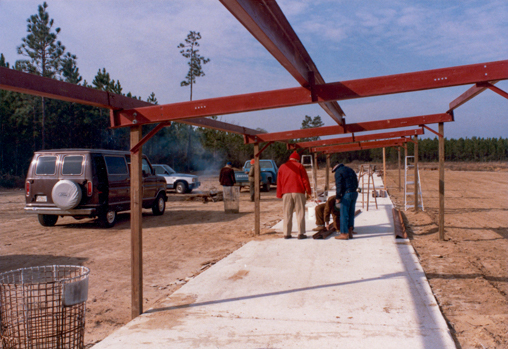
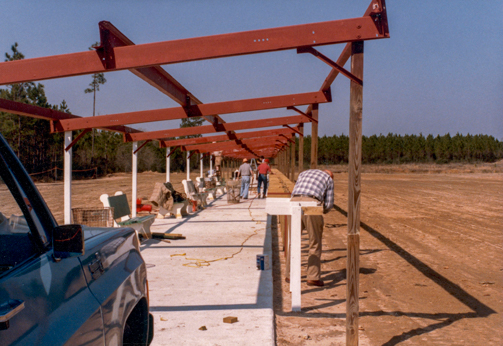
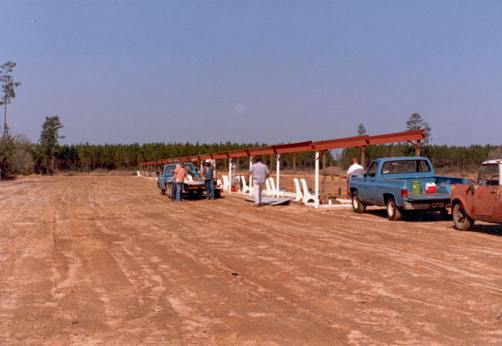
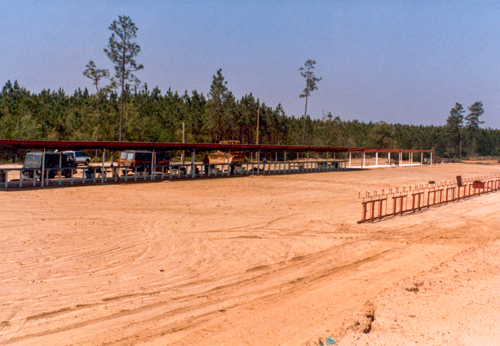
The turning targets are set up at exactly 25 yards from the firing line, ready for final installation. Also note that the roof cover is nearing completion with a section of the rifle range still reflecting the sun light.

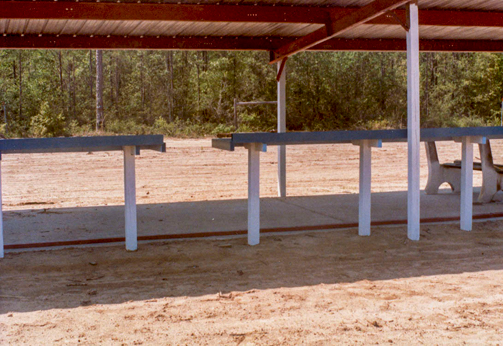
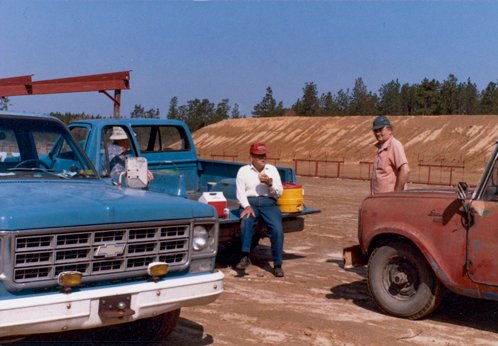


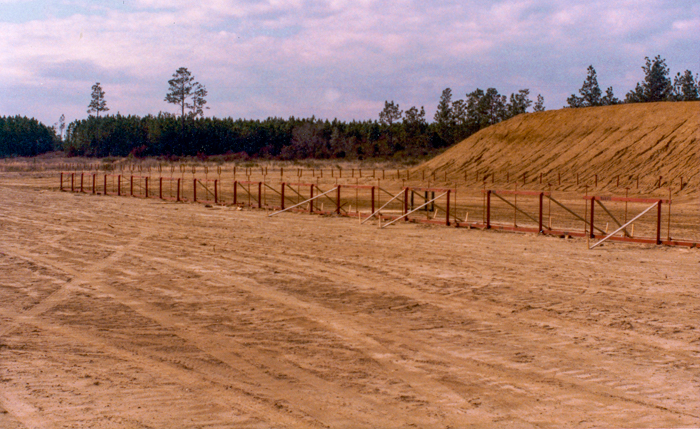

The targets are installed with the electric motor that turns them is in place. There are 45 targets that turn with the capability to disconnect the first 20 targets allowing the after 25 targets to always be active and connect the first 20 for competitions such as the Fiesta of Five Flags Pistol Tournament. This action takes stress off the mechanism with the hope of extending the life cycle of the entire line.
The First Building
The first building at the range was a necessity item that at the time may have been considered a "luxury" item in the days of blazing your own trail to build a range in what was a remote area of Escambia County, Florida. That first building? A kitchen and two fully functional flush restrooms.
Being in a remote area was no obstacle for those who built our range, electricity makes everything possible. Our previous range had nice facilities and this range would be no different.
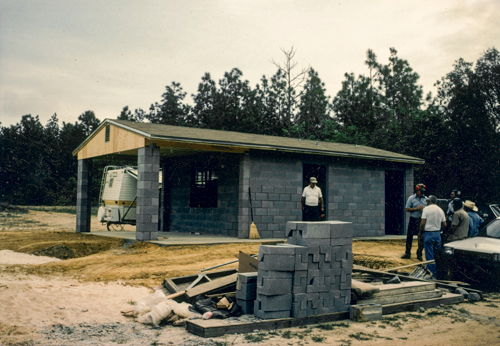
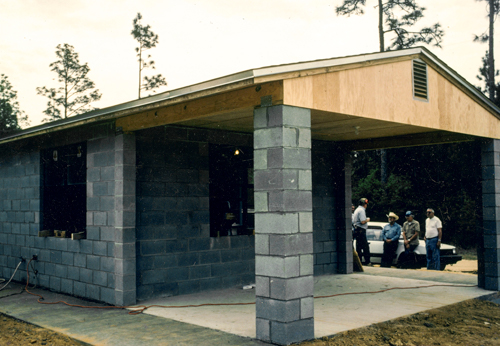
The building was separated from the pistol and rifle firing lines being placed near the recreational shooting range, known affectionately as the "plinking range" to this day.
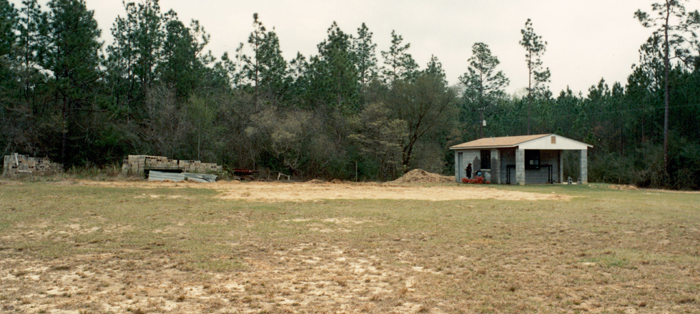
Present day members will note that the concrete firing line for the plinking range has not been poured yet. When visiting the range, check out the transition between the two ranges to see the difference in appearance.
Rebuilding after the tornado
Outside of hurricane, a tornado in our area is rather rare, especially compared with the midwest states. In our case, a tornado caused enough damage that our firing line shelters had to be completely rebuilt into the structures we use today. None of the previous steel shelter remains.
These photos were taken after the shelter was rebuild with heavier timber. The block houses that store targets may also have been built during these repairs since this is their first appearance.
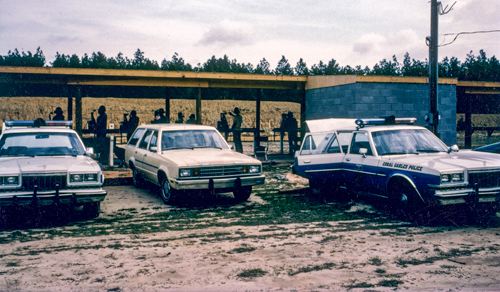

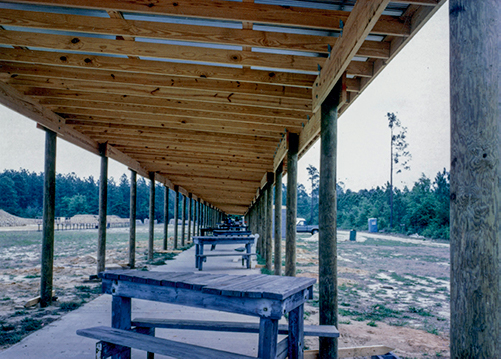
It can be seen that the ranges were not separated at this time. The pistol and 100 yard rifle backstops are clearly visible beside each other.
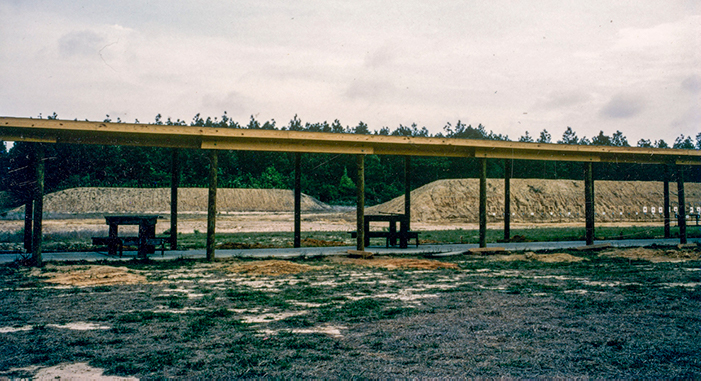
Building the wall
Having ranges adjoining caused its own set of problems, an expensive one. Building a wall is a major expense, but the club needed to do something to allow shooting on both ranges to commence at the same time. A wall would allow the ranges to go "hot" or "cold" without affecting each other, a great benefit.
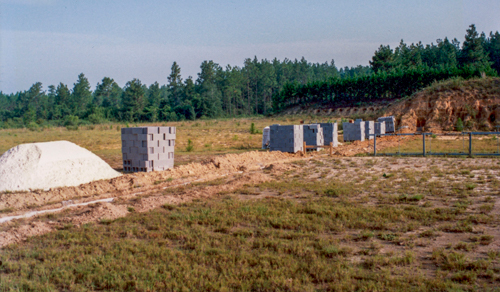
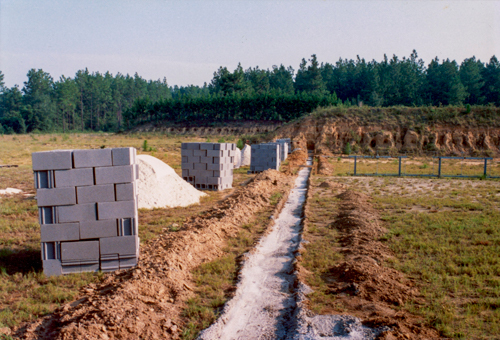
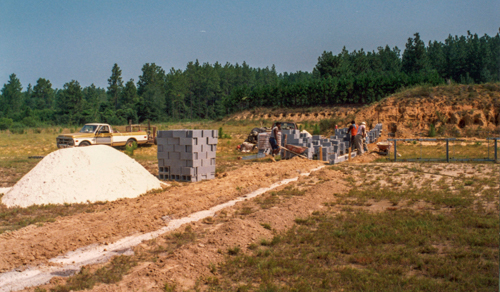

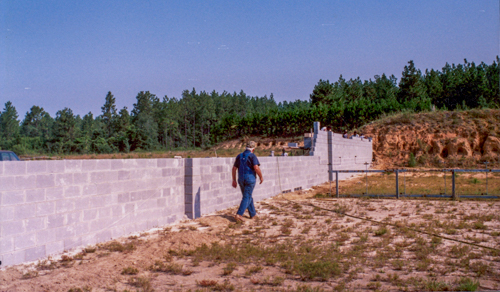
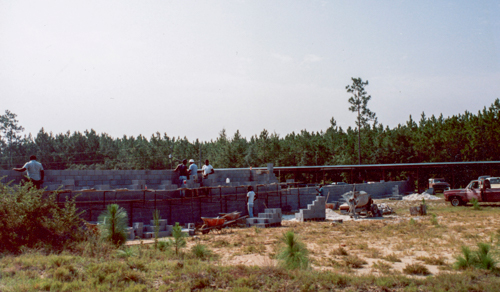
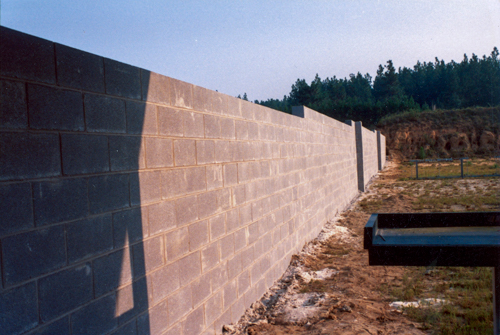
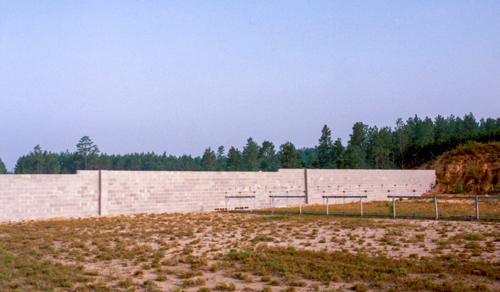

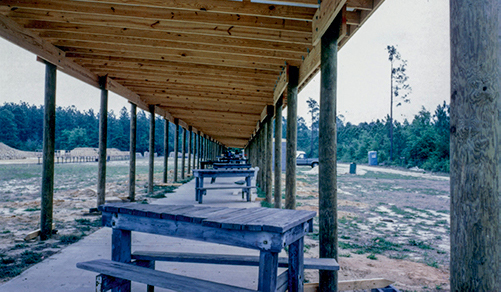
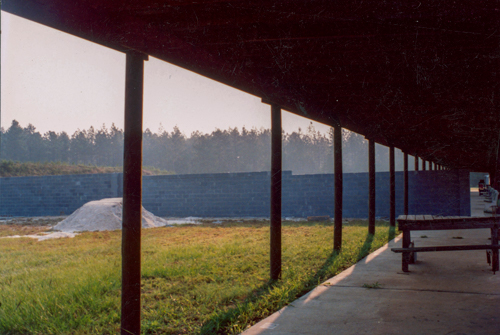
These two photos show the comparison with a before and after view from the rifle range. With the wall, members began enjoying both ranges at the same time without needing a single range control for the entire line.
Adding amenities to the pistol range
The pistol range soon added another feature to aid the foot traffic of those using the range. A wood walkway was added to parallel the 25 yard and 50 yard target lines. To this day, there is not much grass cover so these new walkways to the targets kept the shoes from turning orange in the red dirt.
These wooden walkways were later replaced with the concrete seen today which was laid by the pistol shooters volunteering their time.
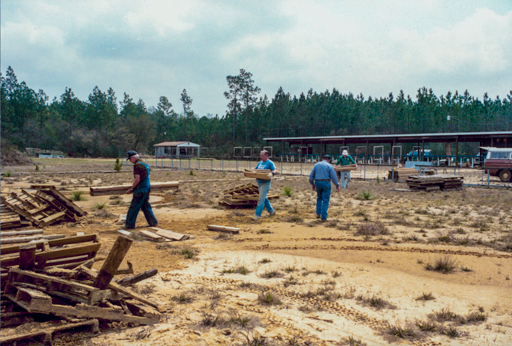
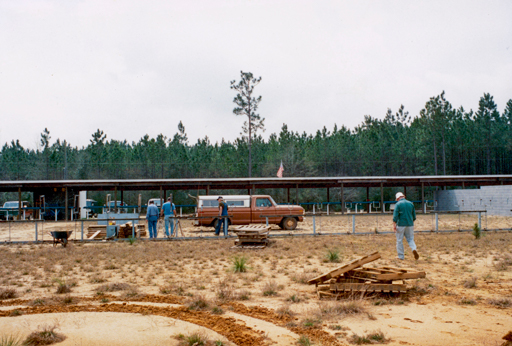
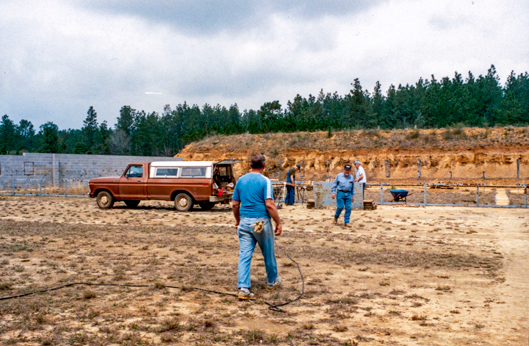
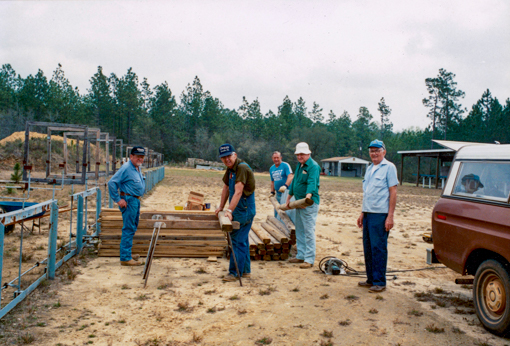
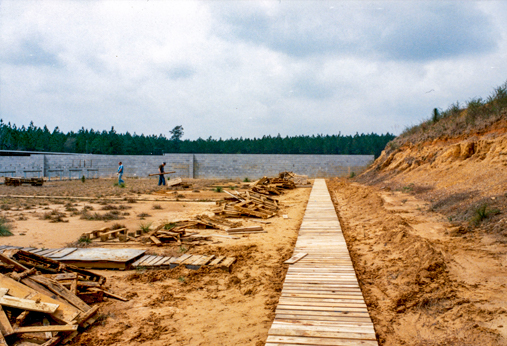
Getting together to enjoy the new range
